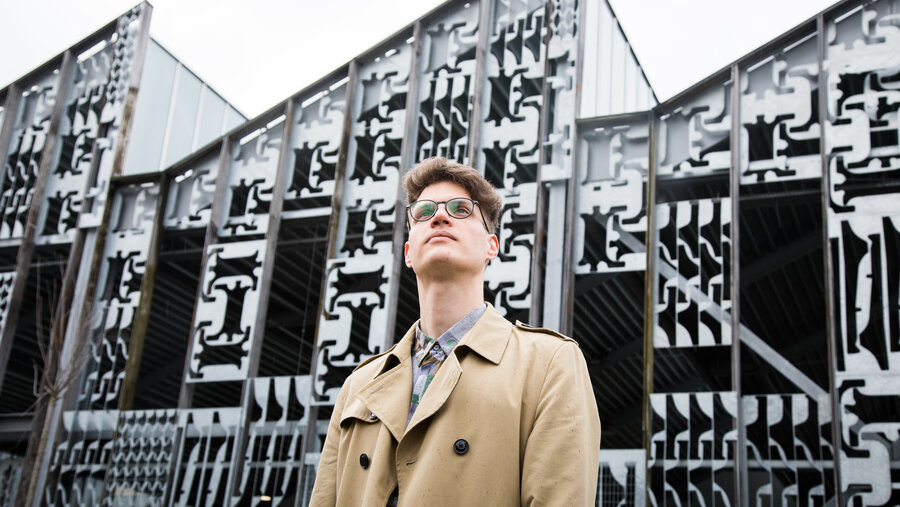
16.00 CMS invited lecture #48 - Liminality
Limen & Liminality
The lecture intends to present a cycle of works by Limen in its initial thought inspired by anthropologist Arnold van Gennep. We will look into the phenomenon of liminal spaces (as part of urban and architectural development) and the phenomena of anemoia and kenopsia that define the psychological and psychophysiological responses of the individuals intertwined with the liminal spaces. Furthermore, we will draw a relation between the memory response and consolidation to the perception of the transitional stage of the liminal duration which is in the theory of A. van Gennep structured into three parts (pre-liminal, liminal, post-liminal).
We will focus on the second part – the liminal stage itself which is perceived differently within the variety of cultures and could be effectively incorporated into the compositional practice where the theory of informational consolidation becomes limited, the sonic environment becomes a spatialized object, spatialization represents a mystical symbolism and the transitional material.

18.00 CMS Gesprächskonzert #24 - concert installation LĪMEN VIII
An installation in a concert setting intends to present a spectral mutation of the sonic material that initially reveals the sound of extensive improvisations with soprano sax, english horn, piano, electric guitar. An ongoing cycle of works inspired by anthropologist Arnold van Gennep, the phenomenon of liminal spaces and the phenomena of anemoia and kenopsia.
LĪMEN VIII
Tilen Lebar - sopran sax
Maria Nikolic - english horn
Se-Lien Chuang - piano, voice
Andreas Weixler - electric guitar
In 2021, I encountered the phenomenon of liminal space, which was later constructed in my interdisciplinary works and I continued the research ever since.
Liminal spaces are thresholds or abandoned residential buildings, areas, corridors, hallways, underground pathways, shopping malls, office buildings, etc.
Their initial purpose is to serve as a space crowded with people. The act of abandonment loses their initial desire.
The individuals who visited such abandoned areas for the first time reported emotional and memory responses to the spaces themselves. These responses are related to two terms.
The first is 'Anemoia' which indicates nostalgia or excitement of a time you have never known. The second 'Kenopsia' describes a particular psychophysiological response of an individual who interacted with the liminal space and experienced its atmosphere.
We could say that liminal spaces enable us to experience these phenomena. Liminal as a cross-disciplinary term is used widely within anthropology and folklore (e.g. initiation rituals), religion and spirituality (e.g. Ascension Day, reincarnation, etc.) and psychology (e.g. a process of transitioning across boundaries of reality and certain types of dissociation).
For instance, I took a closer look at the theory of Arnold van Gennep, who invented the term ‘Liminality’ at the beginning of the 20th century.
The direct relation to the Latin word Līmen is comprehensive and indicates the threshold and passageway at the same time. Fascinated by the term, sense of fluidity and the anthropological theory behind it, I am inspired to continue writing a cycle of works titled Līmen.
The concert sound installation LĪMEN VIII presents the 10th work from the cycle itself. To explain it efficiently we need to understand that:
Preliminality’ includes metaphorical deviation of the present state and forms a minimalistic and repetitive sonic environment throughout the immersive sound spatialization. The concert installation intends to present the first mutation of the sonic material that initially reveals the sound of extensive improvisations with an electroacoustic guitar that gradually evolves and transitions to ‘Liminality.’ The ‘Liminality’ itself has a sense of sequential development. The identity changes and transitions through a 'destructive' progression of the viable sounds of micro-processes (i.e. interferences and beatings with microtonal changes). Moreover, the sonic environment of the ‘Liminality’ seems organically fluid and transitions into the third stage of the Līmen VIII itself.
The third stage ‘Postliminality’ presents a fine spectral interpolation and spectral mutation between the spatialization and the e-bowed sounds. Overall it feels somehow static (i.e. from the harmony, sound and macro form point of view). However, the spatialization of the sound allows it to come to life and to arouse a new sonic identity as the transition forms its purpose and existence.
The project is funded by the Ministry of Culture Republic of Slovenia
